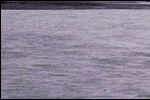
| Home
Mission 2007 Team Research Sources Progress Journal |
|
Wildlife An integral part of the ecosystem are the organisms that inhabit the area. In ANWR, disrupting the fragile balance of these organisms is one of the major concerns related to whether or not oil exploration and drilling should proceed. Particularly, effects on the migration patterns of the Porcupine Caribou Herd may result in devastating changes that endanger survival of young as well as adult caribou. Also of great concern are the polar bears, which build dens that may be disturbed by human activity. Studies done so far have been less than conclusive, but they suggest that while many polar bears may be tolerant of such activity in the fall, problems may arise in the spring when newborn cubs are born and cannot leave the den for two or more months post-partum.
Source: http://www.defenders.org
Wildlife in the 1002 area is extraordinarily diverse for such a small, cold
piece of land. Throughout
the year, hundreds of species migrate to the 1002 region of the Arctic This
region has proven to be a center of biological activity throughout these For
many species, the 1002 region is not a critical stopover along their migratory However,
for the few species that do spend a significant amount of time in the Therefore
it is necessary to identify critical time periods during the year in which The following trophic
level diagram shows briefly the interrelations between the different species: Producers:
Phytoplankton Primary Consumers: Caribou Secondary/Higher Consumers:
Polar bear The relationships between the different species is highly complex as we need to consider the numerous predation patterns. Energy flow in between the different levels are mainly governed by physical factors such as climate, relief, precipitation, local microbial processes and nutrient availability. These govern the growing conditions and nutrient availability to the primary producers, which provide the food to the primary consumers and up the food chain.
|



| Last updated: Dec 1, 2003 | Team 5 - m2007-5@mit.edu |
 Next: Ecological Modelling>>
Next: Ecological Modelling>>